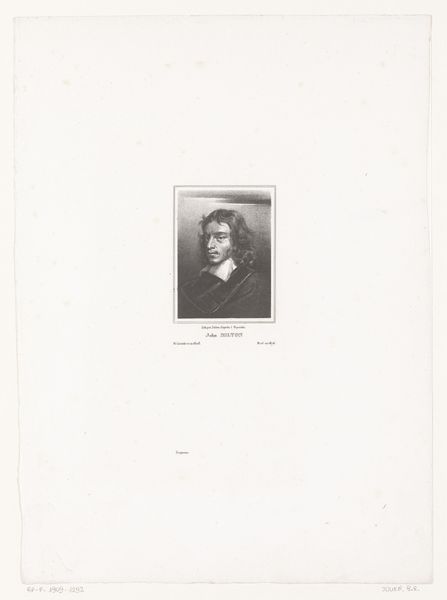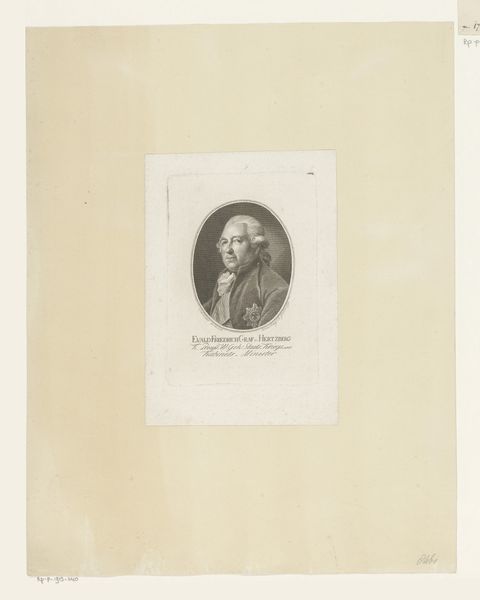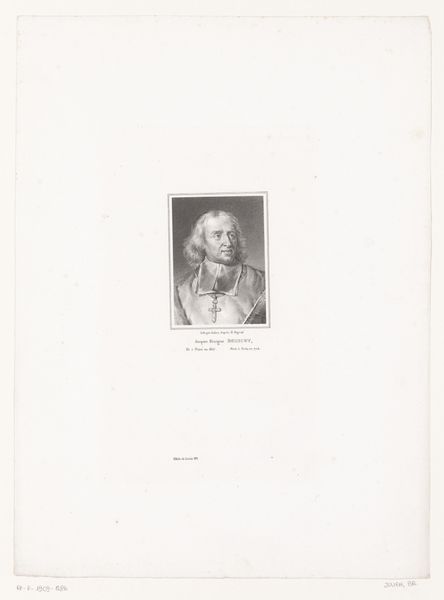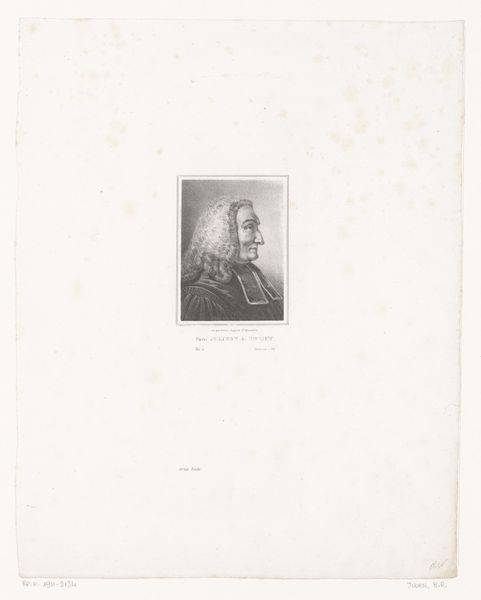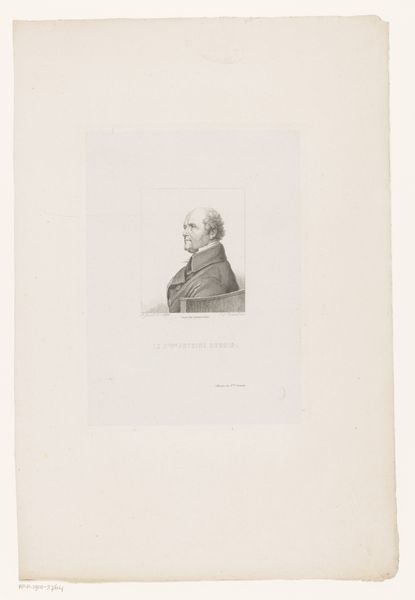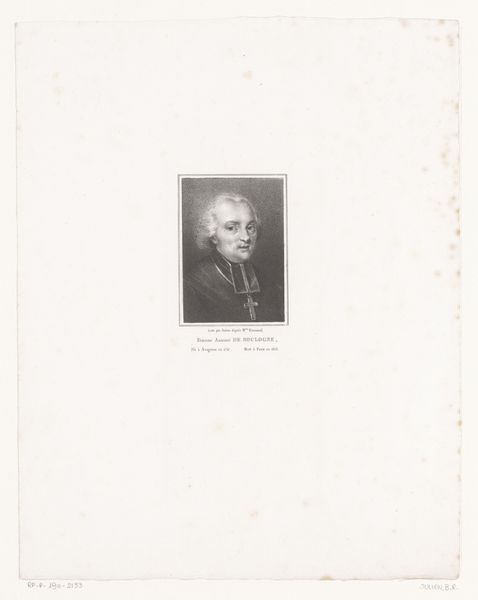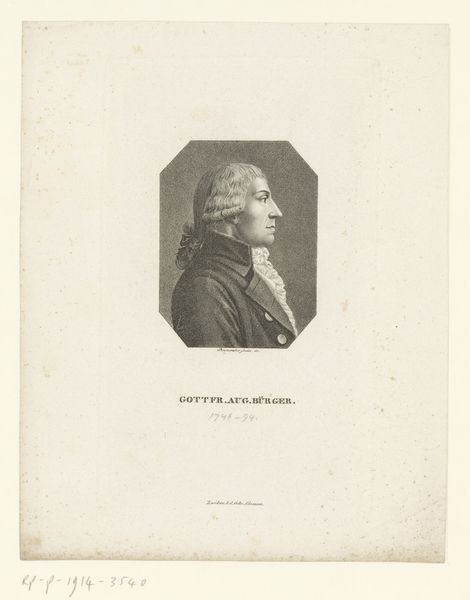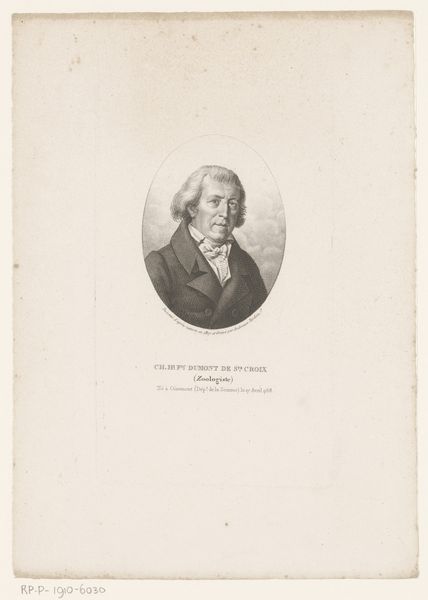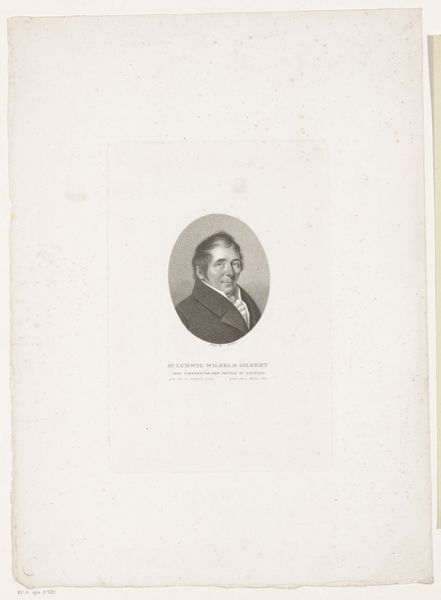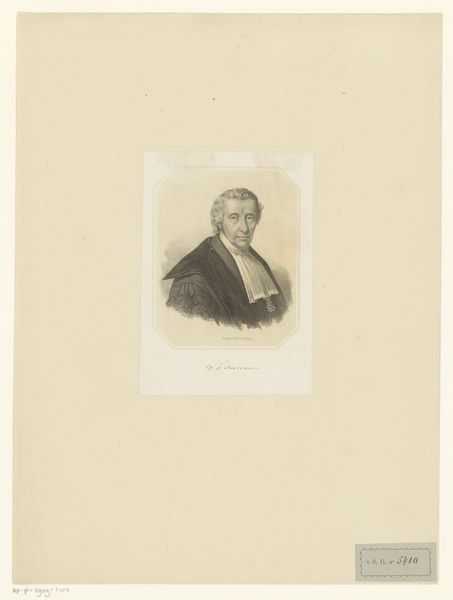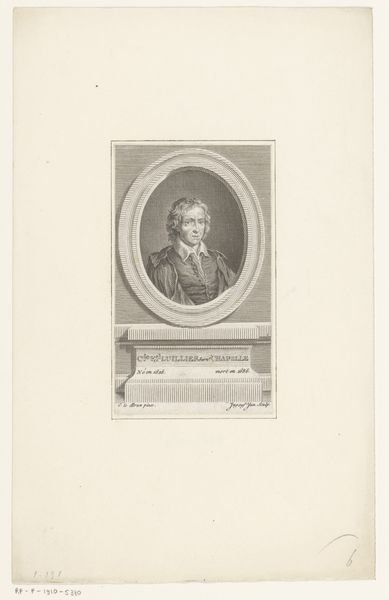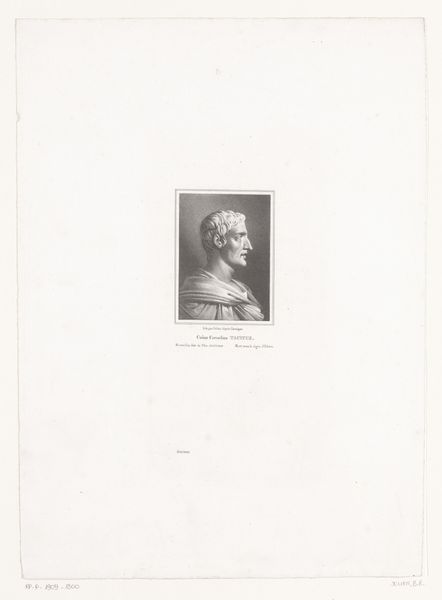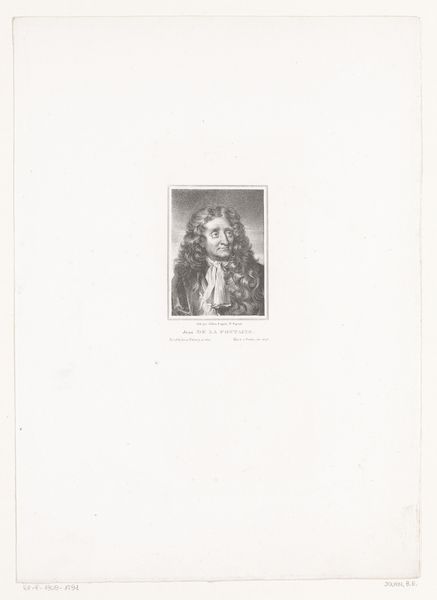
drawing, print, engraving
#
portrait
#
drawing
# print
#
romanticism
#
engraving
Dimensions: height 329 mm, width 238 mm
Copyright: Rijks Museum: Open Domain
Curator: Before us, we have an engraving dating from around 1830, titled "Portret van Charles Frey de Neuville," made by Bernard Romain Julien, held in the Rijksmuseum. Editor: Its subdued tones immediately create a sense of somber introspection. The subject gazes towards the left with an intriguing level of detail, given the medium. It’s a rather severe portrait. Curator: Note the technical mastery Julien employs. He harnesses the precision of engraving to render texture – observe the nuanced play of light on de Neuville's cheek and brow. It creates a subtle yet potent illusion of volume. The controlled strokes work together, evoking a stoic disposition befitting the era. Editor: And consider that this wasn't merely artistic flourish, but physically demanding labor. The act of engraving on metal plate, line by careful line, is crucial. It brings the human effort and toil into stark relief against today's effortless image production. We are faced with understanding the materials, the pressure, the physical commitment inscribed on this work. Curator: Absolutely. From a structural standpoint, we cannot ignore how light operates to both reveal and conceal. Light sculpts his profile but leaves parts obscured, thus enhancing his enigmatic persona. It beckons questions about what remains unsaid and unseen. Editor: But what also fascinates me is who would acquire such a portrait, given the demanding process of creating one. There's value attached, not merely to the depiction, but the social ritual of its production, patronage, and purpose during its creation. We need to also understand the social status conveyed by possessing such crafted luxury. Curator: A superb point. This image acts as a tangible intersection of art, technique, and even psychological expression within a rigid structural frame. Editor: Examining the methods gives access into this historical period's social values – which this print serves to solidify as much as de Neuville's identity. Curator: Indeed, these close examinations offer us glimpses far beyond just visual aesthetics, which in itself opens our eyes to this complex romantic portraiture. Editor: I couldn't agree more; through materials and making, we touch both labor and luxury—offering today's viewer a textured, tangible, visceral history.
Comments
No comments
Be the first to comment and join the conversation on the ultimate creative platform.
